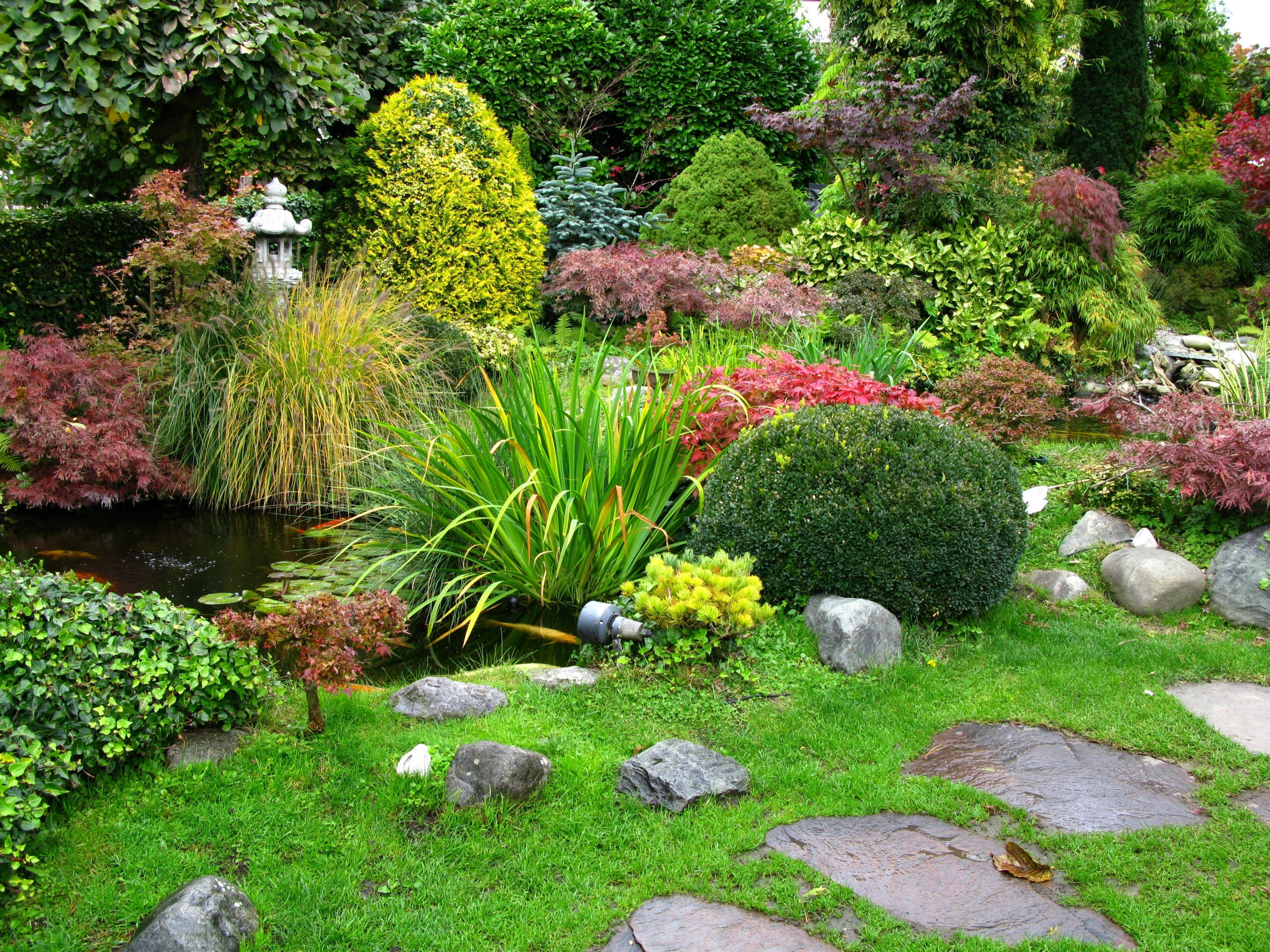Ready, steady, garden
Let the warmth of spring warm up your gardening ideas too, says Julia Gray
After a wet and windy winter, the lovely spring most of us are enjoying is a very welcome sight – one that’d be even more welcome, if you could enjoy it by sitting outside in a bright, light and newly transformed outdoor space.
Bare brick walls in a courtyard garden, for example, can look drab and boring, but a layer of paint will transform them in no time. Sandtex’s Feature Wall range of masonry paint includes some pretty vibrant colours, but if you’d rather let the plants do the talking, one of the colours, Evening Shadow, is a sophisticated dark grey. At the very least, if you can’t decide on a colour, painting courtyard walls white will make a big difference – they’ll be lighter, brighter and cheerier.
Dilapidated fences really let an otherwise smart garden down, so make the effort to repair or replace broken ones. If you have to start from scratch, fence panels are the quickest option because each panel covers a large area, but closeboard fencing (also called featherboard or featheredge), where the fence is built up board by board, is more durable and bespoke.
Finish off your fence with garden wood paint – it’s more attractive, and unique, than the simple brown wood stain. If you also have a wooden garden shed, be creative and paint it and the fence in coordinating colours, either something subtle and subdued, or (if you’re feeling brave) bold and bright.
If only a hedge will do, opt for shrubs that grow quickly, such as the notoriously vigorous leylandis, or try ready-made hedges, which are much more expensive but provide instant impact. Hedges are better windbreaks than a solid barrier, although not as secure for children and pets. Hedges also filter noise from roads and neighbours, provide natural beauty, encourage wildlife, and tend to be longer-lasting and more weather resistant than fences.
Of course, a garden isn’t much good without an entertaining area. For an inexpensive and quick fix, use gravel, pebbles or slate chips to cover unsightly concrete or paving. Tiles are a more attractive, practical and permanent solution (some floor tiles are suitable for exterior use, including slate and frost-resistant ceramic ones), but getting the ground level enough can be tricky. You’ll need to prepare it well and build up the adhesive so all the tiles are level, otherwise they could easily crack.
Good old-fashioned paving slabs provide a more traditional look; bog-standard slabs are a budget choice, while stone and concrete imitations of stone are nicer but cost more. To add interest to your patio, combine different-sized slabs or tiles, or incorporate patterns like circles, which are available as kits.
Decking is warmer underfoot than paving and can be stained a chosen colour, as a contemporary alternative to a wood shade – non-slip decking stains are most practical. Decking is good for hiding eyesores like concrete and, if raised, can be used to level an impractical sloping or uneven garden. The big DIY chains have lots of outdoor offers at the moment – B&Q, for example, has 20% off decking and paving – so it’s a good time to buy.
For many of us, of course, a garden wouldn’t be a garden without a lawn, but grass isn’t the easiest thing to keep looking good. For repair and replacement, use grass seed or turf. Turf provides an instant lawn, but it needs to be laid (ideally in autumn, or spring) as soon as you get it, and it’s more expensive than seed. Make sure you buy good quality turf raised from seed (rather than meadow turf) from a reputable supplier, and remember to order at least 5% more than you need.
Grass seed (best sown from late summer to mid autumn, or in mid spring) usually takes a couple of months to establish (it can’t be walked on during this time) and is more vulnerable to the weather and birds than turf. For the best results, sow 10% more than is recommended and choose a type of seed suitable for your garden and lifestyle – families with kids or pets, for example, need hard-wearing varieties. New grass seed and turf require plenty of water at this time of year – well, unless, of course, our lovely, warm spring vanishes and April lives up to its reputation for showers.
Latest posts by Sally - Silversurfer's Editor (see all)
- UK ban on EU cheese and meat: What it means for you - April 19, 2025
- Would you support personalised health MOTs at retirement age? - April 19, 2025
- Discover Canada with Canadian Sky - April 17, 2025
- What goes first – the milk or the tea? - April 15, 2025
- 10 Money saving tips for gardeners - April 15, 2025





















